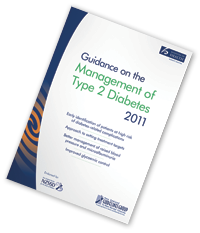As of 1 October 2011, laboratories are reporting HbA1c results in millimoles per mole (mmol/mol) only. For the preceding two years, results have been reported in both percentages (%) and mmol/mol to allow time for both practitioners and patients to become familiar with the mmol/mol system.
In this article 
View / Download pdf
version of this article
Dual reporting of HbA1c laboratory results has ended
As of 1 October 2011, laboratories are reporting HbA1c results in millimoles per mole (mmol/mol) only. For
the preceding two years, results have been reported in both percentages (%) and mmol/mol to allow time for both practitioners
and patients to become familiar with the mmol/mol system.
The reason for the change in units is due to a decision made by the International Federation of Clinical Chemistry (IFCC),
which will make it easier to compare HbA1c results from different laboratories and trials throughout the world.1
New Zealand guidelines recommend that people with diabetes should aim for a target HbA1c range of 50–55 mmol/mol
– or as individually agreed.2
There may be concern that glycaemic control will deteriorate in some cases if patients or carers become confused due
to the new reporting method. General practitioners are advised to explain to their patients that this is not a new method
of testing, but an alternative way of reporting the same test results.
Table 1: Equivalence of HbA1c units2
| HbA1c mmol/mol (new units) |
HbA1c % (old units) |
| 42 |
6.0 |
| 48 |
6.5 |
| 53 |
7.0 |
| 59 |
7.5 |
| 64 |
8.0 |
| 75 |
9.0 |
| 86 |
10.0 |
| 108 |
12.0 |
Table 1 shows the equivalency of HbA1c mmol/mol and HbA1c %.
If an exact conversion from HbA1c mmol/mol to % is required, the following formula can be used:3
HbA1c (mmol/mol) = (HbA1c (%) – 2.15) x 10.929
 An electronic version
of this tool is available here
An electronic version
of this tool is available here
References
- Hicks J. Muller M. Panteghini M. Consensus statement on the worldwide standardisation of the HbA1c measurement.
Diabetologia. 2007; 50:2042-3.
- New Zealand Guidelines Group. Guidance on the management of type 2 diabetes 2011. Available from: www.nzgg.org.nz/search?search=diabetes (Accessed
Sep, 2011)
- Diabetes UK. National diabetes support team. HbA1c Standardisation for laboratory professionals. Available
from: www.acb.org.uk/docs/HbA1clabprofessional.pdf (Accessed
Sep, 2011)
New diabetes resources for primary care

New resources for primary care on the management of type 2 diabetes have been recently released by the New Zealand Guidelines
Group (NZGG).
The resources focus on three priority areas:
- Early identification of patients at high risk of diabetes-related complications
- Management of blood pressure and microalbuminuria
- Management of glycaemic control, including initiation of insulin treatment
In addition to the guidance document, the suite of resources produced by NZGG includes a primary care practitioner quick
reference card, a presenter slide set to support CME and CNE, and a RNZCGP-accredited online CME unit. The content of
these resources was developed by an Advisory Group, drawing on evidence from the Scottish Intercollegiate Guidelines Network
(SIGN) Guideline 116: Management of Diabetes (2010).
The guidance document and all resources are now available to download at: www.nzgg.org.nz